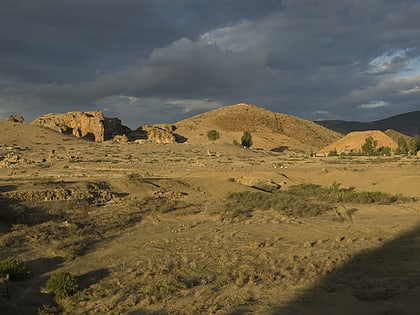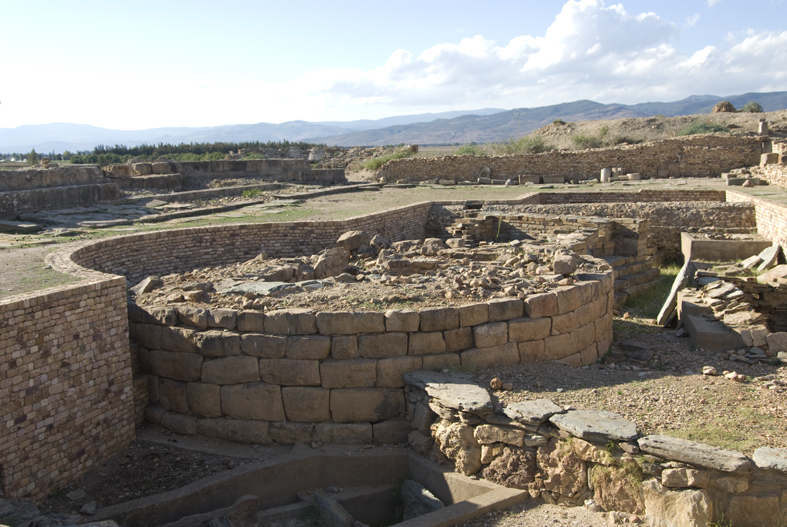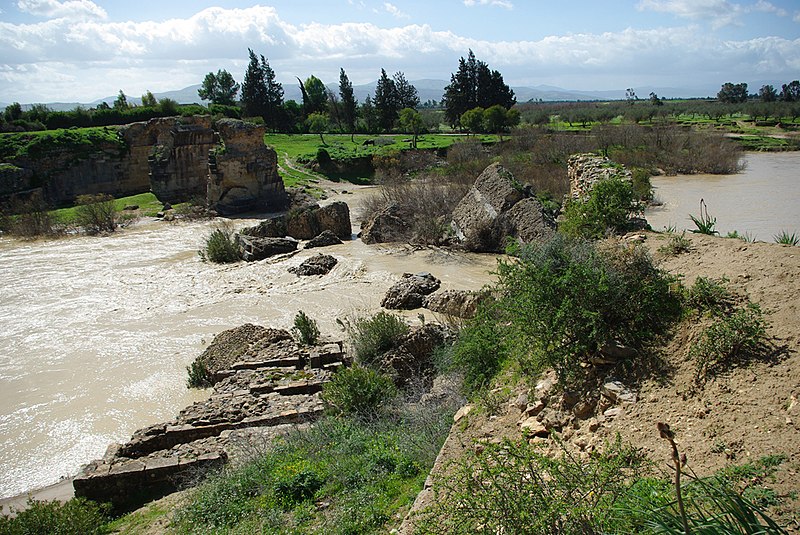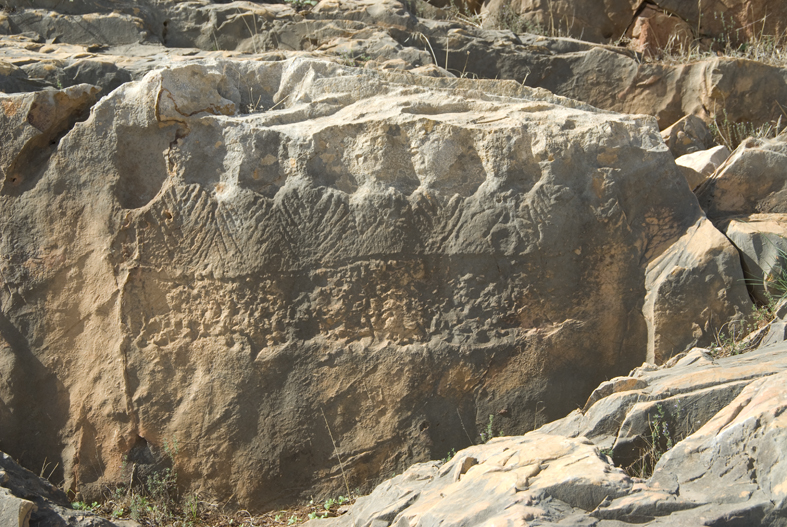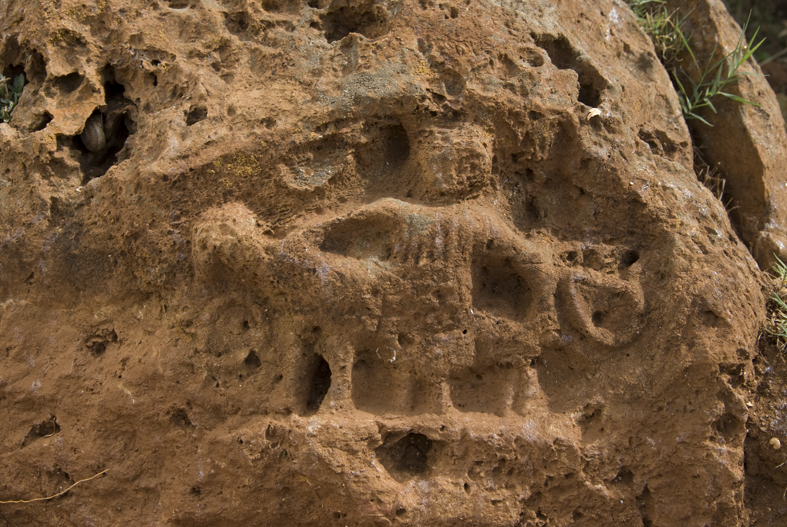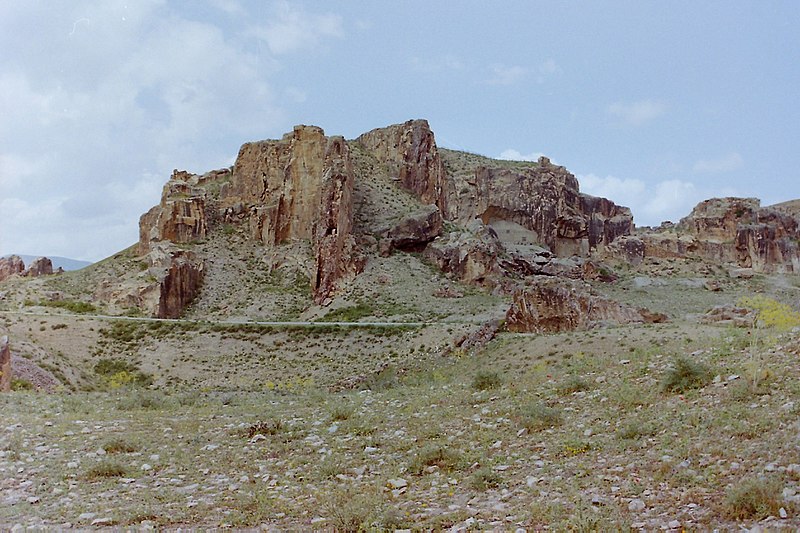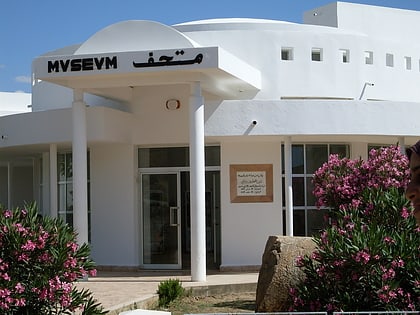Chemtou
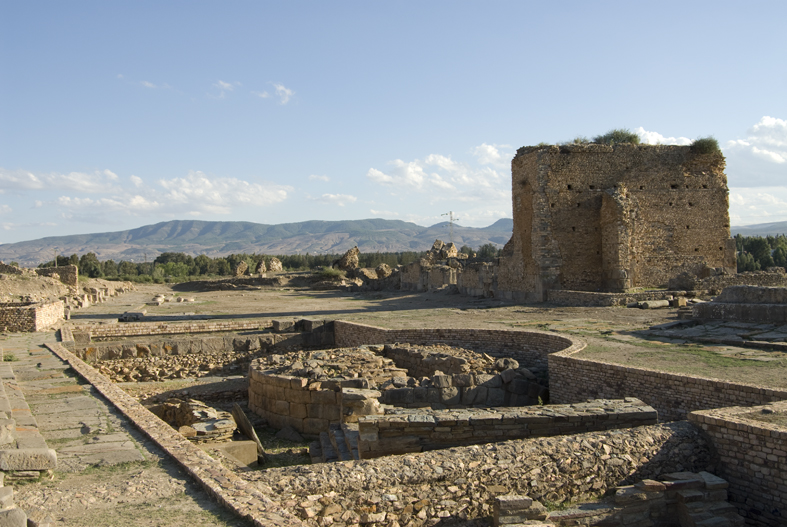
Facts and practical information
Chemtou, located in northwestern Tunisia, stands as a testament to the rich tapestry of human history that has unfolded across the Mediterranean basin. Recognized as an important archaeological site, Chemtou is famed for its ancient quarries and the remnants of a once-flourishing Roman town.
The site is most renowned for its unique yellow marble, also known as Numidian marble or giallo antico, which was highly prized in antiquity. This coveted material adorned palaces and temples throughout the Roman Empire, including the Pantheon and Trajan's Column in Rome. The quarries of Chemtou, operational for centuries, were the primary source of this luxurious stone.
Excavations at Chemtou have unearthed a wealth of artifacts and structures that chronicle the site's long history, which dates back to the 4th century BCE when it was settled by the Numidians. The Romans later annexed the region and incorporated Chemtou into their empire. The site's archaeological layers reveal a complex narrative of cultural interactions, trade, and the economic significance of its marble industry.
Visitors to Chemtou can explore the remnants of the Roman town, including the forum, baths, and residential areas. The site also features a museum that houses a collection of artifacts discovered during excavations, providing insight into the daily life and craftsmanship of the ancient inhabitants.
Jendouba
Chemtou – popular in the area (distance from the attraction)
Nearby attractions include: Chemtou Museum.
